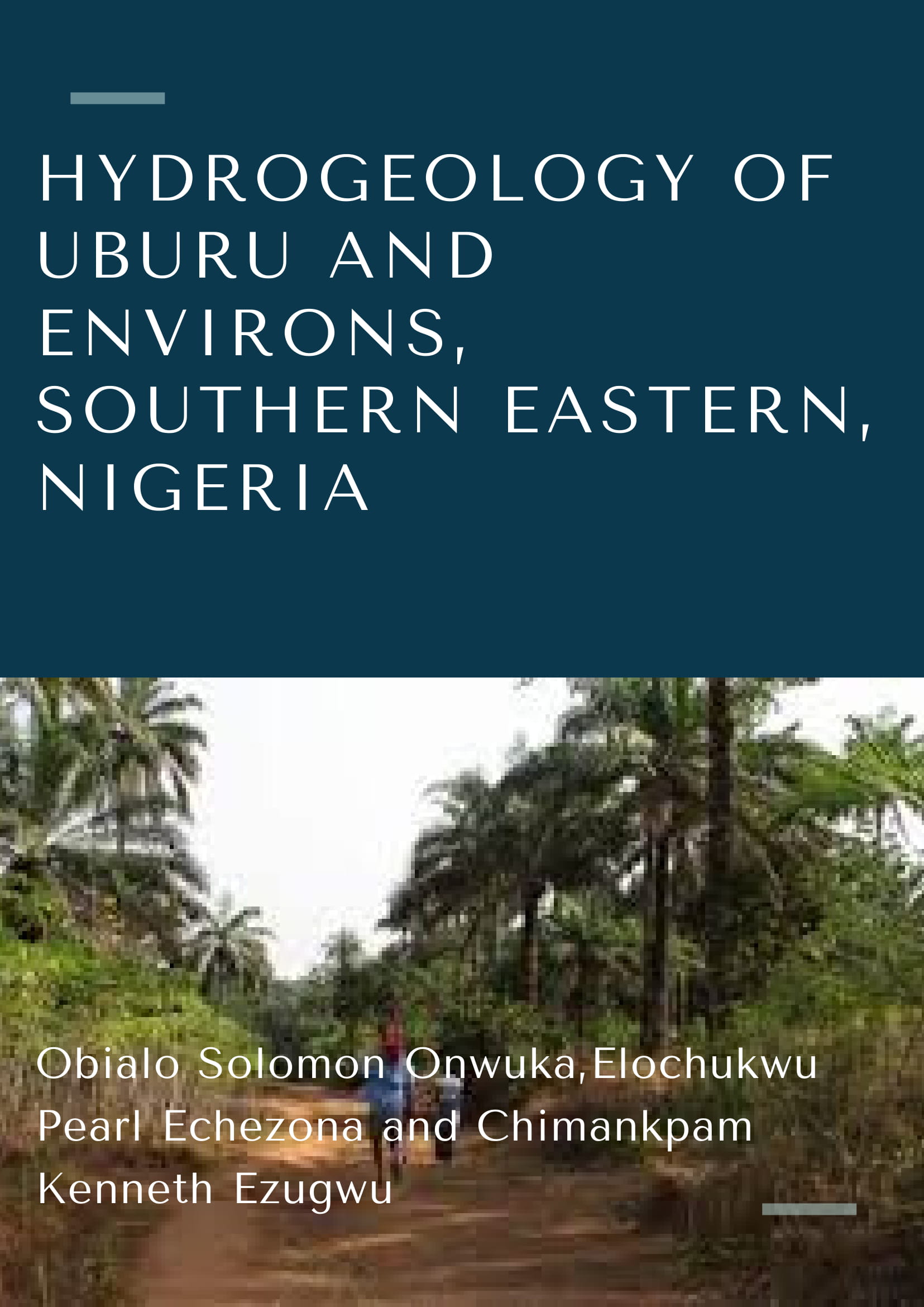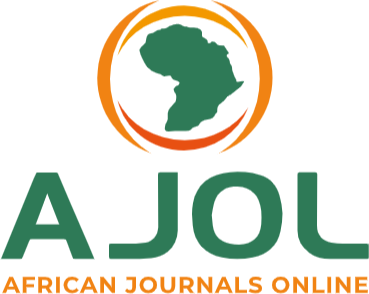Hydrogeology of Uburu and Environs, Southern Eastern, Nigeria
Keywords:
Bacteriological parameter, faucal matter, shales, salt water IntrusionAbstract
Uburu is a rural settlement bounded within latitudes 6˚ 00’N and 6˚ 05’N, and longitudes 7˚ 40’E and 7˚ 45’E. Water quality in Uburu area of southeastern Nigeria was investigated, applying multivariate Statgraphics Centurion XVII, ArcGIS 10.2.2 and Surfer 10 software on hydrochemical and bacteriological data. 10 water samples, ranging from boreholes, hand dug wells and surface waters were collected, to unravel the major factor controlling water quality in the study area. The study area is underlain by Abakaliki Shale, which comprises bluish grey shales with fine to medium to coarse grained sandstones. Physico-chemical and bacteriological analyses were used to assess the influence of geogenic and anthropogenic processes on the groundwater quality. Results suggest that the groundwater is acidic, hard and salty, due to salt water intrusion in the Uburu area. The water types are mainly Na++K+ and S042- Cl–. According to the W.H.O (2017) standards, the levels of the physico-chemical parameters in the groundwater indicate that the water is acceptable for domestic use; but the bacteriological analysis shows high counts of Escherichia coliform (E.coli) bacteria, which indicates poor sanitary conditions in the study area. It will be safe, therefore, to suggest that the water be treated before it is used for drinking and preparation of food, in order to avoid incidences of gastrointestinal diseases caused by the ingestion of water contaminated by faecal matters. The groundwater and surface water cluster analysis unraveled that rock mineral dissolution, sewage and agricultural waste contaminations, are the main factors controlling the water chemistry in the area

Downloads
Published
Issue
Section
Similar Articles
- Mercy Uwem Useh, Danlami Uzama, Patrick Obigwa, Effects of Abattoir Activities in the Surrounding Soils within Abuja, Nigeria , Communication In Physical Sciences: Vol. 8 No. 1 (2022): VOLUME 8 ISSUE 1
- Usman Umar Modibbo, John Stanley, Martins Moses, Victoria John Danjuma, Nutritional and Chemical Characterization of Avocado Oil from Three Cultivars in Mambila Plateau, Taraba State, Nigeria , Communication In Physical Sciences: Vol. 12 No. 6 (2025): Volume 12 ISSUE 6
- Yunusa Habibat, Omoniyi K. Isreal, Stephen Abechi, Aroh A. Oyibo, Owolabi A. Awwal, Imam Naziru, Green Synthesis of Titanium Oxide (TiO2) Nanoparticles Using Phyllanthus Niruri and Assessment of Its Antibacterial Activity in Wastewater Treatment , Communication In Physical Sciences: Vol. 10 No. 1 (2023): VOLUME 10 ISSUE 1
- Aminu Ismaila, Abubakar Sadiq Aliyu , Yakub Viva Ibrahim, Evaluation of Gamma Radiation Dose Level in Mining Sites of Riruwai, Kano, Nigeria , Communication In Physical Sciences: Vol. 8 No. 1 (2022): VOLUME 8 ISSUE 1
- Monday Musah, Hauwa I. Muhammad, John T. Mathew, Yakubu Azeh, Musa T. Umar, Proximate, Minerals and Functional Properties of Bombax buonopozense Cclyx , Communication In Physical Sciences: Vol. 7 No. 2 (2021): VOLUME 7 ISSUE 2
- E. C. Ogoko, Pollution status of soil within the vicinity of Automobile mechanic workshops in Owerri Municipality, Nigeria , Communication In Physical Sciences: Vol. 4 No. 1 (2019): VOLUME 4 ISSUE 1
- Ubong Ime Essien, Anduang Odiongenyi, Clement Obadimu, Iniobong Enengedi, Investigation of Snail shells as an Adsorbent and Precursor for the synthesis of Calcium Oxide Nanoparticles for the Removal of Amoxicillin from Aqueous Solution , Communication In Physical Sciences: Vol. 9 No. 4 (2023): VOLUME 9 ISSUE 4
- Nyeneime W. Akpanudo, Onyeiye Ugomma Chibuzo, Musanga cecropioides Sawdust as an Adsorbent for the Removal of Methylene Blue from Aqueous Solution , Communication In Physical Sciences: Vol. 5 No. 3 (2020): VOLUME 5 ISSUE 3
- Shuaibu Musa Abubakar, Aliyu Suleiman, Mohammed Abdullahi Baba, Shamsuddeen Umar Abdullahi, Aminu Adamu Bayero, Jamilu Musa Babangida, Investigation of the Effect of Gum Arabic-Rice Husk Hybrid Filler on the Mechanical Properties of Polystyrene Composite , Communication In Physical Sciences: Vol. 12 No. 7 (2025): Volume 12 issue 7
- Kabiru Usman, H. Abba, O. R. A. Iyun, Preparation and Characterization of African Star Apple Seed Shell (Chrysophyllum Africanum) For The Removal of Acid Red 9 , Communication In Physical Sciences: Vol. 8 No. 1 (2022): VOLUME 8 ISSUE 1
You may also start an advanced similarity search for this article.



